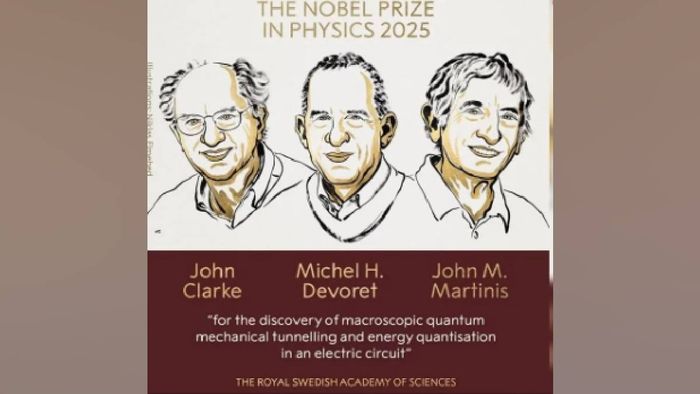Scientists John Clarke, Michel H. Devoret and John M Martinis to be jointly awarded Physics Nobel 2025
The Royal Swedish Academy of Sciences has announced that the Nobel Prize in Physics for 2025 will be jointly awarded to John Clarke, Michel H. Devoret, and John M. Martinis for their revolutionary discovery of macroscopic quantum mechanical tunnelling and energy quantisation in an electric circuit.

- Oct 07, 2025,
- Updated Oct 07, 2025, 4:05 PM IST
The Royal Swedish Academy of Sciences has announced that the Nobel Prize in Physics for 2025 will be jointly awarded to John Clarke, Michel H. Devoret, and John M. Martinis for their revolutionary discovery of macroscopic quantum mechanical tunnelling and energy quantisation in an electric circuit.
Their pioneering experiments—carried out on a chip—demonstrated quantum physics at work on a visible, tangible scale, bridging the once-distant worlds of quantum mechanics and classical physics.
One of the most fundamental questions in physics has long been: How large can a system be and still display quantum mechanical effects?
The 2025 laureates provided a profound answer. They showed that an electrical circuit large enough to hold in one’s hand can still exhibit unmistakable quantum phenomena. Their experiments revealed two quintessential quantum effects—tunnelling and quantised energy levels—within an electric circuit, thus proving that quantum behaviour is not limited to the microscopic world of atoms and particles.
In quantum mechanics, tunnelling refers to the extraordinary process through which particles can pass through barriers that should, in classical terms, be impenetrable. Until now, such behaviour was thought to vanish in larger, macroscopic systems. Clarke, Devoret, and Martinis overturned that notion through meticulous experimentation and theoretical insight.
The Breakthrough Experiments
The trio conducted their historic experiments in 1984 and 1985, using a specially designed electronic circuit made of superconductors—materials that conduct electricity without resistance. These superconducting components were separated by a thin non-conductive layer, forming what is known as a Josephson junction.
By precisely refining the circuit and measuring its properties, the researchers managed to control and observe the phenomena that emerged when electric current flowed through the system. According to the Nobel citation, the collective movement of charged particles in the superconductor behaved as a single macroscopic quantum entity—a “particle” that spanned the entire circuit.
“This macroscopic particle-like system is initially in a state where current flows without any voltage. The system is trapped in this state, as if behind a barrier it cannot cross,” the Nobel Committee explained. “Its quantum nature is revealed when it escapes the zero-voltage state through tunnelling, detectable as a sudden appearance of voltage.”
The trio also succeeded in demonstrating that the system’s overall behaviour adhered closely to the fundamental laws of quantum mechanics, offering unprecedented proof of quantum phenomena manifesting in large-scale systems.
The laureates’ findings laid the foundation for today’s quantum technologies, which harness the strange rules of quantum mechanics for computation, communication, and measurement.
While transistors in everyday microchips already rely on quantum effects, the 2025 Nobel-winning discovery paves the way for next-generation applications—from quantum computers and sensors to ultra-secure quantum cryptography.
By revealing that the quantum realm can be extended to systems of human scale, Clarke, Devoret, and Martinis have opened a new frontier in our understanding of the universe—and our ability to shape it through technology.